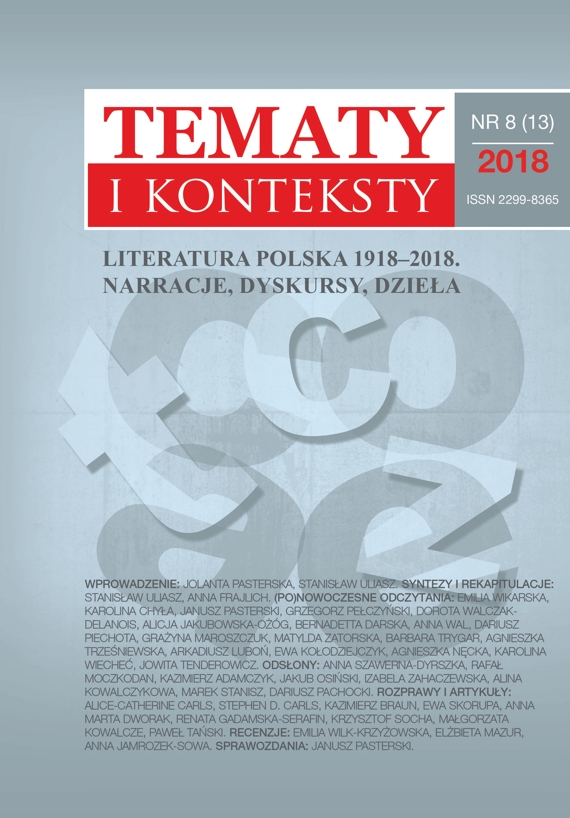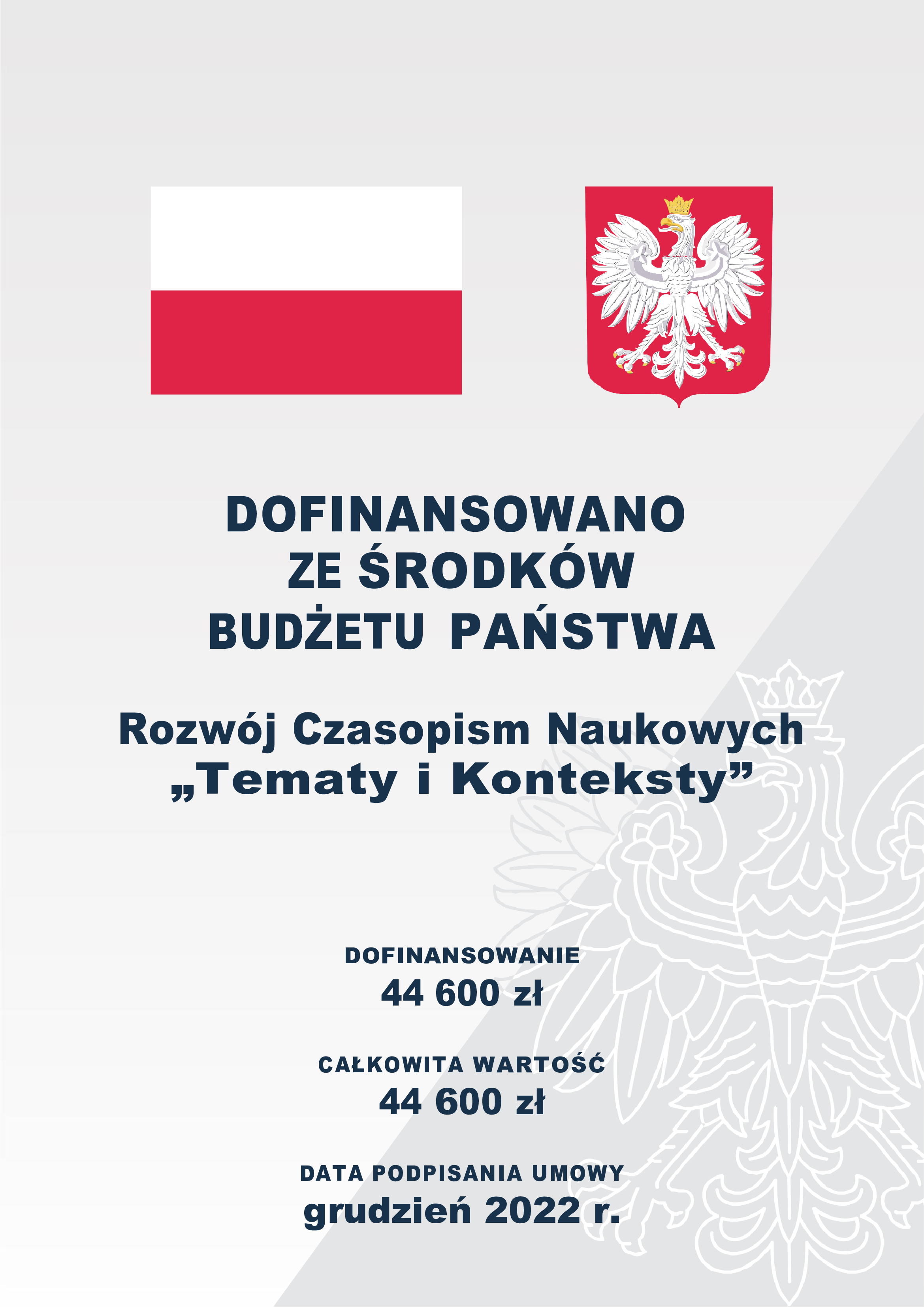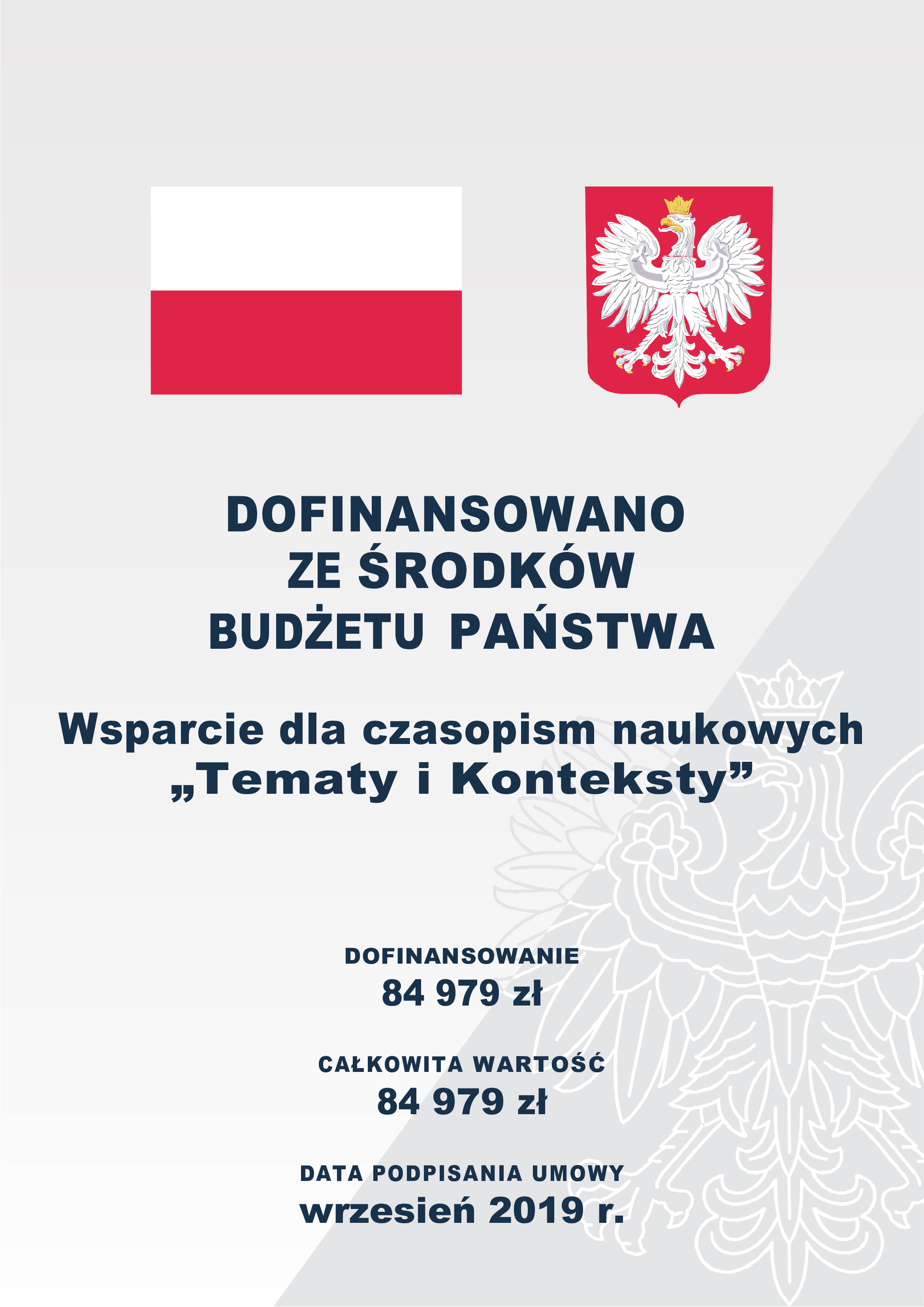New Perspectives on Europe from 1914 to 1945
DOI:
https://doi.org/10.15584/tik.2018.28Keywords:
Aristide Briand, modernization, total war, League of Nations, European integration, Władysław Sikorski, Józef Wittlin, Albert Thomas, religion, emigration, emancipation of women, paradigm shiftAbstract
Europe from War to War, 1914–1945 started as an attempt to document topics left blank in most textbooks dealing with twentieth century Europe. It ended up being a thoroughly researched, comprehensive study of the first half of the century. Its original structure features parallel chapters within each chronological section (1914–1919, 1929–1939, 1939–1945). Each section contains two chapters that deal with international and domestic matters. Chapters are organized topically. In the chapters focusing on international affairs, military and diplomatic issues are considered in their complementarity, and the technological and global dimensions of each conflict are highlighted. In chapters dealing with domestic matters, economic, political, demographic, and social developments are dealt with a systematic fashion. As a result of the consistent coverage of topics, the continuum of history reverberates throughout the book.
Europe from War to War, 1914–1945 highlights topics that are seldom handled in comprehensive studies of the time period, such as: the contributions of the colonies to European powers in both world wars; interwar projects for European unification; the role of Scandinavian, Iberian, and Balkan countries; the role of religion; trans-national feminism; the demographics of minorities, emigration and refugees; the impact of both world wars on initiatives such as relief efforts, international labor regulation, and public health.
Modernization, a key theme throughout the chapters dealing with domestic developments, is examined through five criteria: political change (democracy, human rights, political participation and liberal measures), demographic change (refugees, resettlements, migrations, and growth), economic progress (industrial modernization, agricultural reforms and labor legislation), social policies (welfare, professional mobility, public health, and women’s advancement), and urban development (urban planning, transportation). A separate chapter deals with cultural developments from 1914 to 1945; it provides an integrating perspective on the period’s momentous changes.
Downloads
References
Aldcroft D.H. and Morewood S., The European Economy Since 1914. Routledge, 2013.
Applebaum A., Gulag: A History. Doubleday, 2003.
Bergen D.L., War and Genocide: A Concise History of the Holocaust. 2nd ed. Rowman & Littlefield, 2009.
Broadberry S. and Mark Harrison M., The Economics of World War I. Cambridge University Press, 2005.
Clavin P., Securing the World Economy: The Reinvention of the League of Nations, 1920–1945. Oxford Universiy Press, 2013.
Ecksteins M., Rites of Spring: The Great War and the Birth of the Modern Age. Houghton Mifflin, 1989.
Ferguson N., The War of the World: Twentieth Century Conflict and the Descent of the West. Penguin Books. 2006.
Judt T., Ill Fares the Land. Penguin Books, 2011.
Keegan J., The Second World War. Penguin Books. 2005.
Kershaw I., Hitler (2 vols). W. W. Norton, 1999–2000.
Kershaw I., To Hell and Back: Europe 1914–1949. (The Penguin History of Europe). Penguin Books, 2016 reprint edition.
Lucassen L., The Immigrant Threat: The Integration of Old and New Migrants in Western Europe Since 1850. Illinois University Press, 2005.
Marks S., The Illusion of Peace: International Relations in Europe, 1918–1933. Palgrave, 2003.
McMeekin S., The Russian Revolution: A New History. Basic Books, 2017.
Morrow J., The Great War. An Imperial History. Routledge, 2004.
Nicholas L.H., Cruel World: The Children of Europe in the Nazi Web. Vintage Books, 2006.
Payne S.G., Civil War in Europe, 1905–1949. Cambridge University Press, 2011.
Snyder T., Bloodlands: Europe between Hitler and Stalin. Basic Books, 2012.
Strachan H, ed. The Oxford Illustrated History of the First World War. Oxford, 2014.
Tomka B., A Social History of Twentieth Century Europe. Routledge, 2013.
Urwin D., The Community of Europe. A History of European Integration Since 1945. 3rd ed. Longman, 2009.
Wandycz P.S., The Twilight of the French Eastern Alliance, 1926–1936: French-Czechoslovak-Polish Relations from Locarno to the Remilitarization of the Rhine. Princeton University Press, 1988.
Watson P., The Modern Mind: An Intellectual History of the 20th Century. Harper, 2001.
Weinberg G.L., A World at Arms: A Global History of World War II. 2nd ed. Cambridge University Press, 2005.
Downloads
Published
How to Cite
Issue
Section
License
Copyright (c) 2018 Tematy i Konteksty

This work is licensed under a Creative Commons Attribution-NonCommercial-NoDerivatives 4.0 International License.




